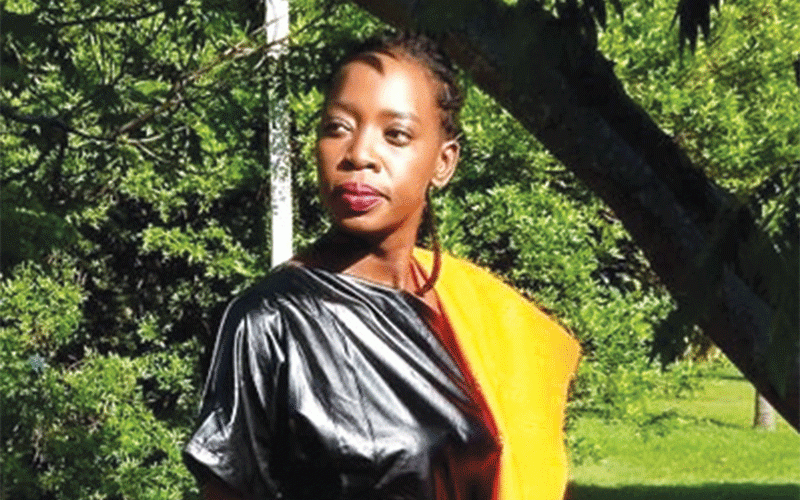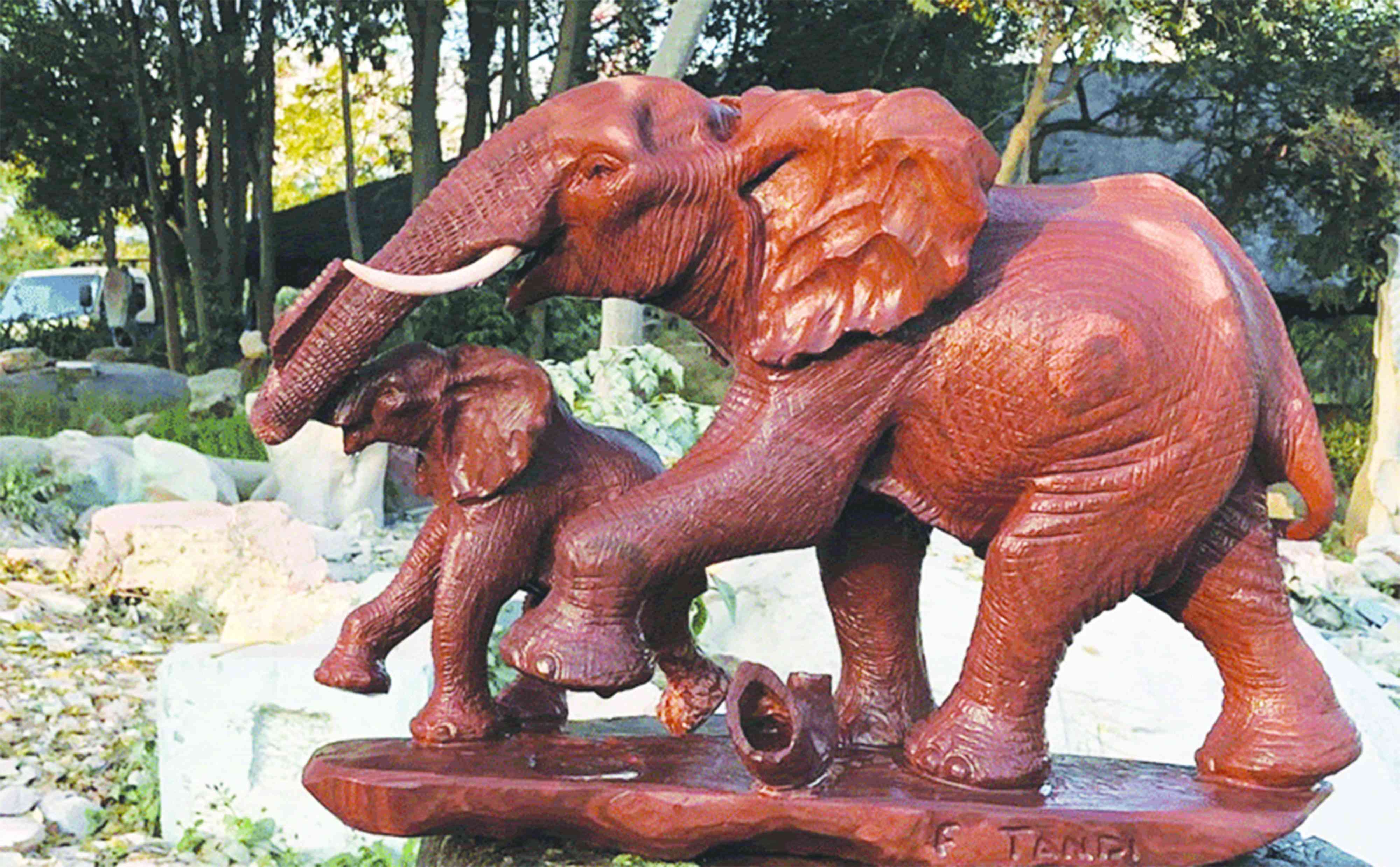
The fashion industry is often viewed as elitist, thus not dominant, yet it has the power to define people’s identity, culture, improve living conditions and transform the country’s economy if given support, according to a player in the industry, Sikhanyisiwe “Ska” Sebata. She has scooped several awards, including the Heritage Style Award, Diamond Scissors Award and the PPC Imaginurium Commendation Prize in Fashion last year. This year she bagged the first prize. NewsDay (ND) Life & Style correspondent Tafadzwa Kachiko sat down with the creative and social entrepreneur for a chat on the sidelines of her recent talk at the National Gallery of Zimbabwe titled Not Just a Dress: Ska Sebata on Alternative Fashion, Concrete and the Community. Below are the excerpts of the interview.
ND: How do you define fashion, and what does it take for one to be a fashion designer?
SS: It’s the most powerful art in the world. Movement, design, and architecture are all there. It articulates to the world who we are and who we would like to be. Of course, there are fashion schools, but I never attended any. I am self-taught. I regard it as a God-given talent. Others are born fashion designers and some are made designers.
ND: What inspired you to join the trade?
SS: I have always been creative, so the inspiration came from deep inside me. In 2009, I entered the Cotton Company of Zimbabwe (Cottco) Fashion Fair and I haven’t looked back since. I love art in general, and I also love the idea of works of art such as clothing.
ND: Is it your full time career?
SS: No. Over the years, I have expanded into social entrepreneurship. I have found myself taking up many other different roles, including media management and consultancy as part of Rise N Shine Trust in rural Victoria Falls.
ND: What inspires your designs?
- Chamisa under fire over US$120K donation
- Mavhunga puts DeMbare into Chibuku quarterfinals
- Pension funds bet on Cabora Bassa oilfields
- Councils defy govt fire tender directive
Keep Reading
SS: Music by female artistes based on the different facets that make up a woman motivates me to come up with particular designs. I create from emotions brought about by music. From that, I am able to pair a colour, texture and shape as well as create a garment. ND: Who is behind your success as a designer?

SS: All the women who have ever purchased a SkaSebata Couture garment, institutions like the National Gallery of Zimbabwe who support emerging talents, companies such as the Cottco who paved the way for emerging fashion designers as well as most recently PPC Zimbabwe, who appreciates fashion as an art and tool for development within communities and the economy.
Most importantly, family support is a huge factor. When dreams and aspirations are supported from a young age, it becomes a breeding ground for success. ND: What kind of designs do you prefer wearing most?
SS: I like playing dress-up for different occasions. I am into high glamour, or you will find me in all black and tennis shoes, depending on where I am.
ND: What was your biggest fear before you seriously took up designing?
SS: Rejection; not knowing whether or not people would like and appreciate my work. ND: What has been your greatest challenge in designing?
SS: Adjusting to what the public understands and appreciates, while still staying true to my creativity, but also balancing it all as a business in an unstable economy.
ND: How do you stay up to date regarding fashion and how is your market like?
SS: I always want to be the first to do something, so I do not follow trends. Instead, I believe in setting them. I simply create. I sell my taste. There will always be a group that will appreciate and buy what I am selling. I believe in never sacrificing my creative being in order to fit the norm.
ND: How would you relate past and present fashion trends?
SS: There is no re-inventing the wheel. It’s all about how each creative interprets each trend and works it into their own narrative.
ND: How was your experience working with PPC products
SS: Very amazing! Just being able to experiment in such a wonderful way, I have learnt a lot about creating texture and pattern-making.
Initially, I assumed that working with products like cement was going to be difficult, but it turned out to be a real fluid agent that I could easily manipulate.
ND: To what extent has the PPC Imaginarium competition impacted your career?
SS: It has solidified my title as an artist, above everything else. The notches added to my CV have been a welcome addition and the monetary prizes have put me steps closer to realising my dream through my work, with the communities I am a part of.
ND: Do you think the fashion industry is getting the much-needed support from various stakeholders?
SS: Support could be better. Fairness would also go a long way. You find that competitions such as the PPC Imaginarium are advertised in such a way that it creates the impression that Zimbabwean artists would get the equivalent prizes as their South African counterparts, but that’s not the case.
The government could also support industries that complement each other, such as fashion working together with the tourism industry.
ND: What’s your perception about African attire and its future?
SS: I would like to think that the main problem is that Zimbabweans do not understand fashion, because they have no fashion identity, the way other African countries do.
Once an identity is created, there will be more local support and no need for garments from elsewhere.
ND: Where do you see the local fashion industry in next five years?
SS: This is a trillion-dollar industry. Right now, the world is looking to Africa for not only inspiration, but input. The creative fashion industry attracts both domestic and international participants, who have a high earning power and spend money on shopping and visiting local attractions.
So, a functioning fashion industry plays in well with a good tourism industry. This is something that should be looked into at greater length.
South Africa, Nigeria and Botswana utilise these industries and their economies are growing. If Zimbabwe adopts the same method, a lot could be achieved within five years.
ND: What advice would you give to emerging designers?
SS: Be original. Exist as yourself first before putting out any work. Once you know yourself, it’s easier to create and remember that only 10% creativity makes up the brand, the rest is business. Create a product that you will be proud of several years from now.











